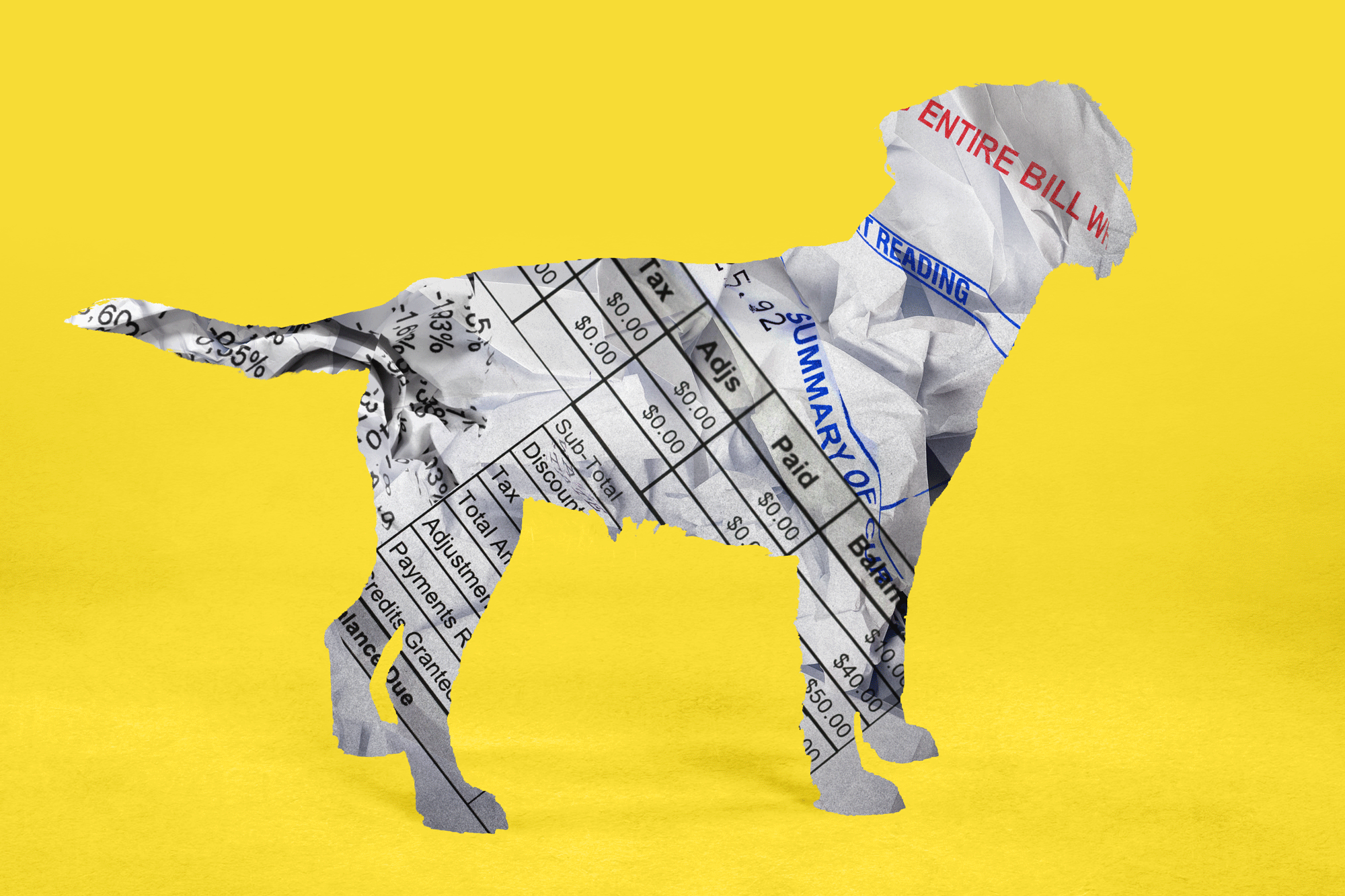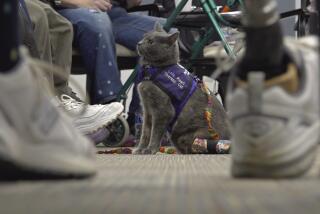Pets on Patient Rounds : The medical community is catching on to what many people have always known: Animals are good for us.
- Share via
Kenny has had some tough breaks in his life.
Born retarded, the 49-year-old man has the mental capacity of a toddler. Then a few years ago, his spinal cord was injured in an accident, leaving him a paraplegic. Unable to walk, stand or sit, he spends long days lying flat on his back at Holy Cross Medical Center, where he stares at flickering images on the television screen or the white walls surrounding him. Sometimes he cries.
Until Ginger comes in. Then Kenny’s face breaks into a smile. “Love her,” he says, puckering his lips for a kiss.
Ginger is a honey-colored, dachshund-beagle mix. For the past year, the dog’s owner, occupational therapist Lisa Schklar, has taken Ginger to Holy Cross in Mission Hills, to bring companionship and joy to the patients’ otherwise dreary lives.
“Patients who drift in and out of consciousness will wake up when Ginger is placed on their bed,” Schklar said. “A dog gives them something they can talk about. Even patients who are completely out of it can talk about dogs and make complete sense.”
Ginger isn’t the only animal making patient rounds. Many hospitals throughout the country, including several in the San Fernando Valley, use animals in a variety of therapeutic ways. The medical community is catching on to what pet owners have always known: Animals are good for us.
Several studies have shown that stroking an animal helps lower blood pressure, and survival rates after a heart attack are higher among pet owners.
People who spend time with pets recover more quickly from surgery, are better able to cope with illness and have heightened self-esteem, according to The Delta Society, an organization in Renton, Wash., that researches relationships between pets and people.
Ginger has a soothing effect on patients who are simply unhappy about being stuck in a hospital. Doris Ings, 90, who is recuperating while her fractured hip mends, often becomes cranky when nurses try to force her to get dressed or walk around.
“Everything with her is a battle, a fight, a refusal,” a therapist said. “But when we bring the dog in, she mellows.”
Ings cocked her good ear toward the therapist’s voice. She deciphered the word dog. “Oh, the dog! I love the dog!” she said. Ginger was placed on her bed, and Ings’ face lit up. “Hello, sweetheart. Oh, you are a dear,” she said.
The Pasadena Humane Society’s Companion Animal Program uses pets at nursing homes, children’s hospitals and rehabilitation facilities. Dozens of volunteers bring dogs, cats, bunnies and hamsters to cheer up bored and lonely patients.
At a recent stop at Oakview Convalescent Hospital in Tujunga, volunteer Joy Morris of Van Nuys and her dog, Fred, roamed the corridors and halls, stopping in every room as residents called out, “Oh, look! Fred’s here!”
Fred, a brown-spotted springer spaniel whose head is precisely the height of a lap, is perfect for the job. Calm and placid, he quietly noses up to each resident, patiently waiting for a pat on the head. “Fred loves everybody. And he’s just the right size for wheelchairs,” Morris said proudly.
“Pets give patients a chance to socialize, interact and reminisce,” said recreational therapist Mary Kaye Gerski, who created the pet-assisted therapy program for the psychiatric units and senior day-care program at Northridge Hospital Medical Center. “Pets are wonderful, because they are there with unconditional love and affection.”
Five dogs and one rabbit are used at Northridge Hospital as “co-therapists”--sometimes with great success. “We have seen people who are very depressed and not talking or having any kind of interaction. Then an animal walks in, and they brighten up and become verbal and responsive,” Gerski said.
“Sam is a stimulus for conversation,” said volunteer Holly Sokol-Panzer of Tarzana, referring to her 3-year-old cocker spaniel. “Patients start talking about pets they had when they were children, or they talk about animals they had on a farm. Out of nowhere, an individual who has not spoken will say, ‘Here’s Daisy! This looks just like Daisy!’ ”
Sokol-Panzer introduces Sam to each patient and passes dog biscuits around as patients hold the dogs on their laps. She often brings a guitar and leads the patients in songs, from “How Much Is That Doggy in the Window” to “Rudolph the Red-Nosed Reindeer.”
One white-haired woman, Mary, sat in her wheelchair stonily during much of a recent session. A therapist explained that the woman had a stroke and is angry and depressed about being unable to speak or function as she used to. Then Megan, a golden retriever, quietly sat at Mary’s side. Mary stared ahead miserably. The dog extended her paw, patiently waiting for a handshake. Mary ignored her. But Megan, tail wagging, kept her golden paw outstretched.
Finally, the woman clasped Megan’s paw. The two shook hands, and Mary let out a surprisingly hearty laugh.
Mary smiled for the rest of the session.
More to Read
Sign up for Essential California
The most important California stories and recommendations in your inbox every morning.
You may occasionally receive promotional content from the Los Angeles Times.













